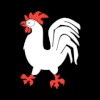Vefsn Municipality
Vefsn Municipality
Vefsn kommune | |
|---|---|
 | |
 Nordland within Norway | |
 Vefsn within Nordland | |
| Country | Norway |
| County | Nordland |
| District | Helgeland |
| Administrative centre | Mosjøen |
| Government | |
| • Mayor (2003) | Jann-Arne Løvdahl (Ap) |
| Area | |
• Total | 1,928.72 km2 (744.68 sq mi) |
| • Land | 1,839.96 km2 (710.41 sq mi) |
| • Water | 88.76 km2 (34.27 sq mi) |
| • Rank | #33 in Norway |
| Population (2011) | |
• Total | 13,307 |
| • Rank | #77 in Norway |
| • Density | 7.2/km2 (19/sq mi) |
| • Change (10 years) | |
| Demonym | Vefsning[1] |
| Official language | |
| • Norwegian form | Neutral |
| Time zone | UTC+01:00 (CET) |
| • Summer (DST) | UTC+02:00 (CEST) |
| ISO 3166 code | NO-1824[3] |
| Website | Official website |


Vefsn (Template:Lang-sma) is a municipality in Nordland county, Norway. It is part of the Helgeland traditional region. The administrative centre of the municipality is the town of Mosjøen (population: 9,631). Other villages include Drevvassbygda, Elsfjord, and Husvik.
History
The municipality of Vefsn was established on 1 January 1838 (see formannskapsdistrikt). In 1862, the eastern district (population: 921) was separated from Vefsn to become the new municipality of Hattfjelldal. This left Vefsn with 5,051 residents. In 1876, the town of Mosjøen (population: 379) was separated from Vefsn to become a separate municipality.
In 1927, the northern district was separated from Vefsn to become the new municipality of Drevja and the southern district was separated to become the new municipality of Grane. After the separations, Vefsn had 3,119 residents remaining. In 1939, a small area of Vefsn (population: 45) was transferred to Mosjøen.
On 1 January 1962, the town of Mosjøen and the municipalities of Drevja, Elsfjord, and Vefsn were merged to form a new, larger municipality of Vefsn. On 1 January 1995, the mainland areas of Alstahaug (population: 70) were transferred to Vefsn.[4]
Name
The municipality is named after the river Vefsna which flows through the municipality into the Vefsnfjorden. The meaning of the river name is unknown. Historically, the spelling has varied from Vefsen to Væffsn.[5]
Coat-of-arms
The coat-of-arms is from modern times; they were granted on 13 September 1974. They show a gray and red rooster on a black background. The rooster is a symbol for watchfulness and alertness. It was adopted by the municipality of Mosjøen on 25 March 1960. After the merger with Vefsn, Drevja, and Elsfjord in 1962, the new name of the municipality became Vefsn and the old arms of Mosjøen were chosen for the new municipality. Since the arms officially became obsolete after the merger, they were re-granted in 1974.[6]
Churches
The Church of Norway has three parishes (sokn) within the municipality of Vefsn. It is part of the Indre Helgeland deanery in the Diocese of Sør-Hålogaland.
| Parish (Sokn) |
Church Name | Location of the Church |
Year Built |
|---|---|---|---|
| Dolstad | Dolstad Church | Mosjøen | 1735 |
| Drevja | Drevja Church | Drevja | 1883 |
| Elsfjord | Elsfjord Church | Elsfjord | 1955 |
Geography

The administrative centre of Vefsn is the town of Mosjøen which is situated along the innermost part of the Vefsnfjorden. Outside Mosjøen, the large municipality of Vefsn is dominated by spruce forests, mountains, lakes, agriculture, and the Vefsna river. The municipality is served by Mosjøen Airport, Kjærstad.
The mountain Lukttinden is located in the northern part of the municipality. There are many large lakes in Vefsn including Drevvatnet, Finnknevatnet, Fustvatnet, Hundålvatnet, Luktvatnet, Mjåvatnet, and Ømmervatnet. The Lomsdal–Visten National Park is partially located in Vefsn.

Birdlife
The bird watcher that visits Vefsn soon realizes that it will take more than a day to cover all the interesting habitats and birding areas. Here you will find areas of virtually untouched coniferous woodlands, both inland and along the coast. The Skjørlegda nature reserve is a good example of woodland protection. Here you will find a virtually untouched coniferous forest covering the Eiterå valley. The valley stretches inland to a higher mountainous habitat that is also worth checking.
See also
References
- ^ "Navn på steder og personer: Innbyggjarnamn" (in Norwegian). Språkrådet.
- ^ "Forskrift om målvedtak i kommunar og fylkeskommunar" (in Norwegian). Lovdata.no.
- ^ Bolstad, Erik; Thorsnæs, Geir, eds. (2023-01-26). "Kommunenummer". Store norske leksikon (in Norwegian). Kunnskapsforlaget.
- ^ Jukvam, Dag (1999). "Historisk oversikt over endringer i kommune- og fylkesinndelingen" (PDF) (in Norwegian). Statistisk sentralbyrå.
- ^ Rygh, Oluf (1905). Norske gaardnavne: Nordlands amt (in Norwegian) (16 ed.). Kristiania, Norge: W. C. Fabritius & sønners bogtrikkeri. p. 64.
- ^ Norske Kommunevåpen (1990). "Nye kommunevåbener i Norden". Retrieved 2008-11-30.



